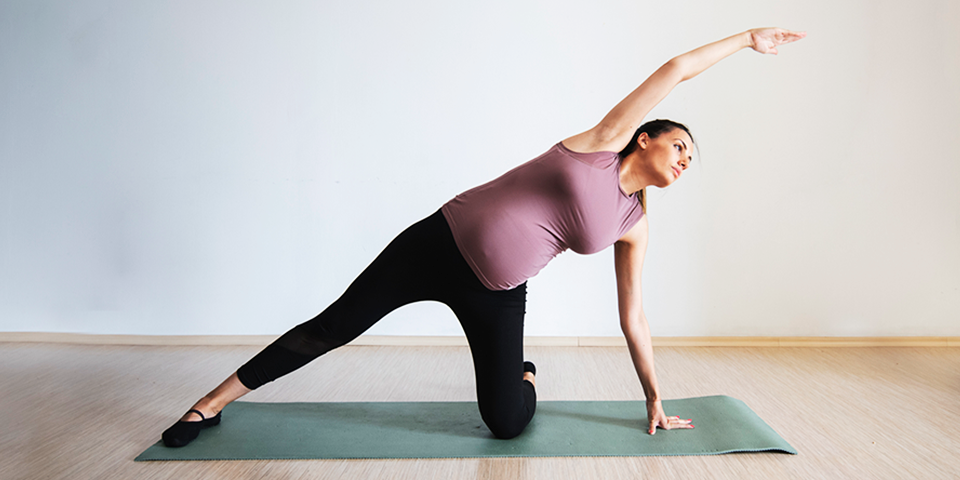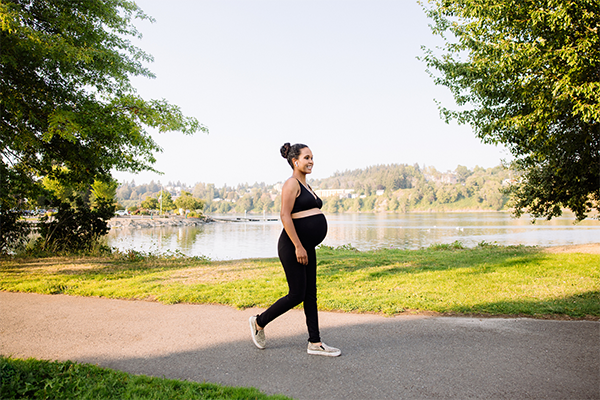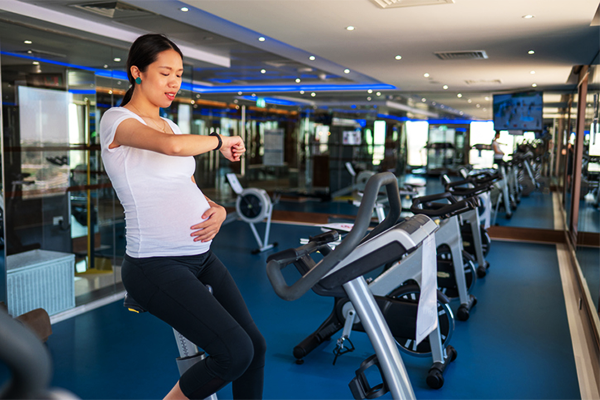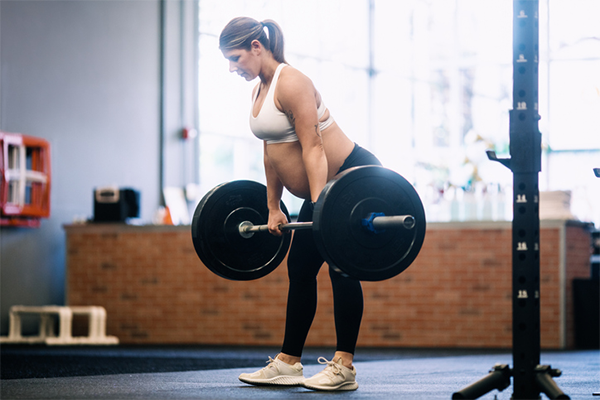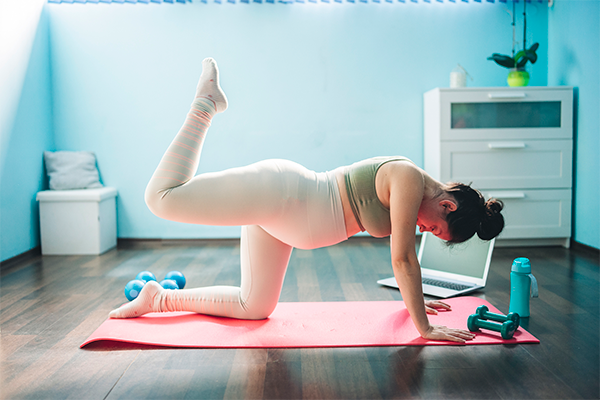Pregnancy brings up a lot of questions in almost every aspect of life, fitness included. For example, if you’re an avid exerciser who’s expecting, are there any safe prenatal workouts?
It’s only natural that your protective parenting kicks in well before you get to meet your little one. But how much of your fitness routine will you need to give up or change to keep them out of harm’s way?
Thankfully, as long as you’ve been cleared by your healthcare professional, there’s no reason why you can’t maintain your regular workouts, with some adjustments.
Here’s what you need to know about staying fit during pregnancy.
Is It Safe to Work Out While Pregnant?
Is exercise safe for pregnancy? The answer is a big, resounding yes.
“As long as your physician clears you to exercise, working out while pregnant can contribute to an overall healthier pregnancy,” says Jaclyn Alterwein, senior manager of music and content at BODi and a group fitness instructor.
With the approval from your healthcare provider, the American College of Obstetricians and Gynecologists (ACOG) recommends getting at least 150 minutes of moderate-intensity aerobic activity each week.
Prenatal fitness supports healthier pregnancies. Exercise may also help you maintain a healthy mood during pregnancy, research has found.
6 Prenatal Fitness Precautions to Know About
Your body is changing, which means how you move it will, too. Here’s what you should know to stay as safe possible:
- Discuss your “prescribed” heart rate with your doctor. Alterwein explains that your healthcare provider may have a heart rate in mind that you should not exceed while working out.
- In general, you can continue working out at the same (but not greater) intensity as you did before you became pregnant, but ask your doctor for guidance and talk with them about any health concerns. New to fitness? No worries, you can start exercising once you become pregnant, but discuss the best way forward with your doctor first.
- Your coordination and balance will change as your belly grows. Your shifting center of gravity can affect prenatal yoga poses, cycling workouts, and even your jogging gait.
- You should try to avoid getting overheated. Keep water on hand when you’re working out and wear sweat-wicking or loose-fitting clothing. That means you should skip hot yoga (and cotton).
- Remember that every pregnancy is different from the next, Alterwein says. Doing a particular workout during a previous pregnancy doesn’t mean it will work during the next one. “If something doesn’t feel right, don’t do it,” she adds.
- Core work can be a key part of a healthy pregnancy, but you’ll likely need to adjust how you approach it as your baby bump grows. Speaking of which, when you start to notice one, it’s time to nix exercises that put your baby between you and the ground (e.g., plank, push-up). That’s also a good time to start avoiding any exercises that have you on your back for very long, as that can pinch vessels that supply blood and oxygen to your baby.
5 Prenatal Workouts to Try
According to the ACOG, swimming, riding a stationary bike, walking, and modified yoga or Pilates are among the best and safest prenatal workouts.
“In general, if you were doing it before pregnancy, you can keep doing it at the same intensity during your first trimester provided that your doctor agrees,” says Alterwein. No matter which workouts you were doing, you should not increase their intensity while pregnant.
But you should also be ready to switch training styles if what you’ve been doing no longer feels good. “It is completely normal to ‘grow out’ of certain types of exercises,” Alterwein adds.
1. Cycling
Indoor cycling — like BODi classes — may be a safer option, Alterwein explains, especially as your belly grows and your balance changes. “Even if you are an experienced outdoor rider, the last place you want to find out your balance is being challenged may be on a moving bike,” she cautions.
Cycling is excellent for your cardiovascular health, but you may need to make adjustments during pregnancy to maintain good form. Alterwein says if that happens, you can “raise the handlebars on the bike and opt to sit instead of stand.”
2. Yoga
You may need to alter your go-to poses when switching to prenatal yoga, but this activity is safe for expectant mothers. Research has found that this type of exercise doesn’t increase any risks for the babies-to-be and can make labor easier for the mothers.
3. Resistance training
Yes, resistance or strength training during pregnancy is safe if you’re not pushing yourself too hard. One study found that combining resistance training with aerobic activity can lead to a healthier pregnancy than just doing aerobic activities.
Do talk to your doctor first, and listen to your body!
4. Walking or jogging
“If you’re looking for a low-impact cardiovascular exercise, walking is it,” says Alterwein. She underscores that walking is fantastic for prenatal fitness, post-natal fitness, and beyond.
There’s more variety in walking workouts than you realize, too, “from trainer-led walking programs to treadmill workouts that resemble outdoor hiking to outdoor walks in your own neighborhood.”
If you’re already a jogger, it’s fine to keep going as long as it feels comfortable.
5. Pilates
Opt for modified Pilates workouts with moves suitable for pregnancy. But, overall, Pilates is helpful during pregnancy since it trains the core and pelvic floor.
One study found that an 8-week Pilates prenatal fitness routine not only improved strength and blood pressure but also offered benefits during labor.
